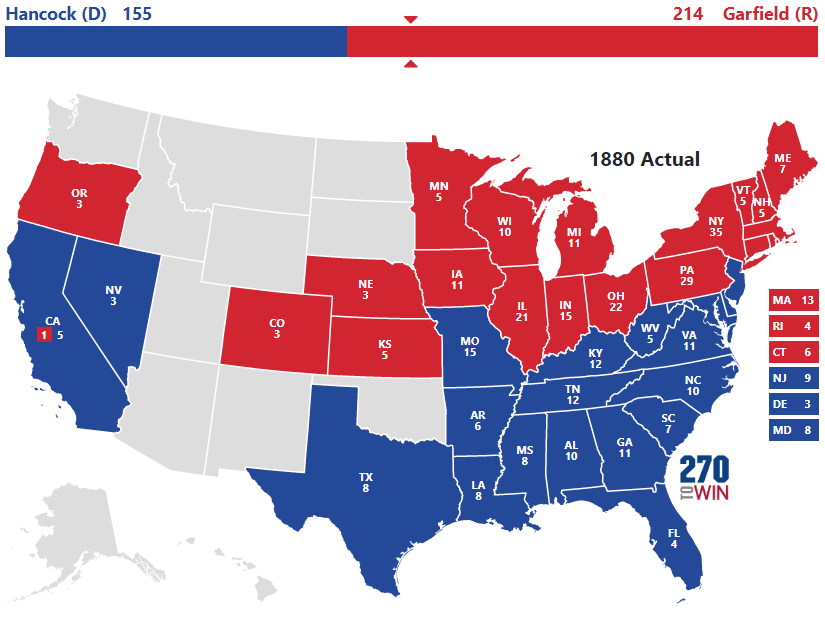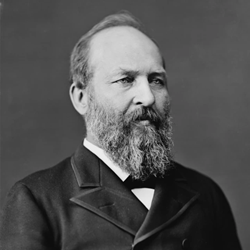1880 Presidential Election
The United States presidential election of 1880 was largely seen as a referendum on the Republicans' relaxation of Reconstruction efforts in the southern states. There were no pressing issues of the day save tariffs, with the Republicans supporting higher tariffs and the Democrats supporting lower ones.
Incumbent President Rutherford Hayes did not seek re-election, keeping a promise made during the 1876 campaign. The Republican Party eventually chose another Ohioan, James A. Garfield, as their standard-bearer. The Democratic Party meanwhile chose Civil War General Winfield S. Hancock as their nominee. Despite capturing fewer than 2,000 more popular votes than Hancock, Garfield was easily elected, capturing 214 of the states' 369 electoral votes. It is to date the smallest popular vote victory in American history.
Source: Wikipedia
1880 Election Results
| Candidate | Party | Electoral Votes | Popular Votes | ||
|---|---|---|---|---|---|
| ✓ | James A. Garfield | Republican | 214 | 4,454,416 | |
| Winfield S. Hancock | Democratic | 155 | 4,444,952 | ||
| James Weaver | Greenback | 0 | 308,578 |

1880 Election Facts
- Vice-Presidential Succession: Garfield died from an assassin's bullet on Sept. 19, 1881, replaced by Chester A. Arthur
- Extremely close popular vote between candidates of the two major parties
- California: Voters chose electors directly, with five pledged to Hancock (D) and one to Garfield (R) winning.
- Issues of the Day: Tariffs, Implications of the end of Reconstruction


